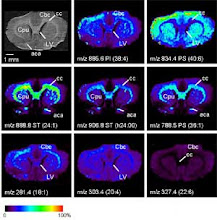DNA sequencing was ready to for the same sorts of processes that revolutionized many areas of technology: automation and miniaturization. Instead of a grad student or technician painstakingly adding everything that was needed into individual tubes, a robot could dispense all the reaction ingredients into a small plastic plate that could hold about 100 individual samples. A second robot could then pull the samples and deposit them into a machine that read out the sequencing information. Large gels were replaced by narrow capillaries in fluorescent DNA sequencing test.
But with the increased progress came increased expectations. Ultimately, researchers didn't just want to have a human genome fluorescent DNA sequencing test, but the ability to sequence any human genome, from an individual with a genetic disease to the genome of a cancer cell, in order to personalize medicine. That, once again, has set off a race for new and exotic sequencing technology. We'll discuss the first wave of these so-called "next generation" sequencers in a future installment.
The advantage of a full genome sequence is that a patient need not undergo repeated tests for specific gene markers as more becomes understood about them, because the patient's genetic information has already been captured. Here's how it works: First a patient would visit a doctor or genetic counselor, who would explain the process and possible problems. For example, the patient would be cautioned that the process might uncover unpleasant information about disease risk fluorescent DNA sequencing test.
Developments in DNA sequencing technologies over the past two decades have been a critically important driver of breath-taking advances in our understanding of broad areas of biology and biomedicine, ranging from human disease to microbial ecology, to evolution in fluorescent DNA sequencing test.. During this time, and especially in the past few years, sequencing costs have decreased faster than Moore’s Law and sequencing capacity has increased at an ever-greater pace.
But with the increased progress came increased expectations. Ultimately, researchers didn't just want to have a human genome fluorescent DNA sequencing test, but the ability to sequence any human genome, from an individual with a genetic disease to the genome of a cancer cell, in order to personalize medicine. That, once again, has set off a race for new and exotic sequencing technology. We'll discuss the first wave of these so-called "next generation" sequencers in a future installment.
The advantage of a full genome sequence is that a patient need not undergo repeated tests for specific gene markers as more becomes understood about them, because the patient's genetic information has already been captured. Here's how it works: First a patient would visit a doctor or genetic counselor, who would explain the process and possible problems. For example, the patient would be cautioned that the process might uncover unpleasant information about disease risk fluorescent DNA sequencing test.
Developments in DNA sequencing technologies over the past two decades have been a critically important driver of breath-taking advances in our understanding of broad areas of biology and biomedicine, ranging from human disease to microbial ecology, to evolution in fluorescent DNA sequencing test.. During this time, and especially in the past few years, sequencing costs have decreased faster than Moore’s Law and sequencing capacity has increased at an ever-greater pace.

